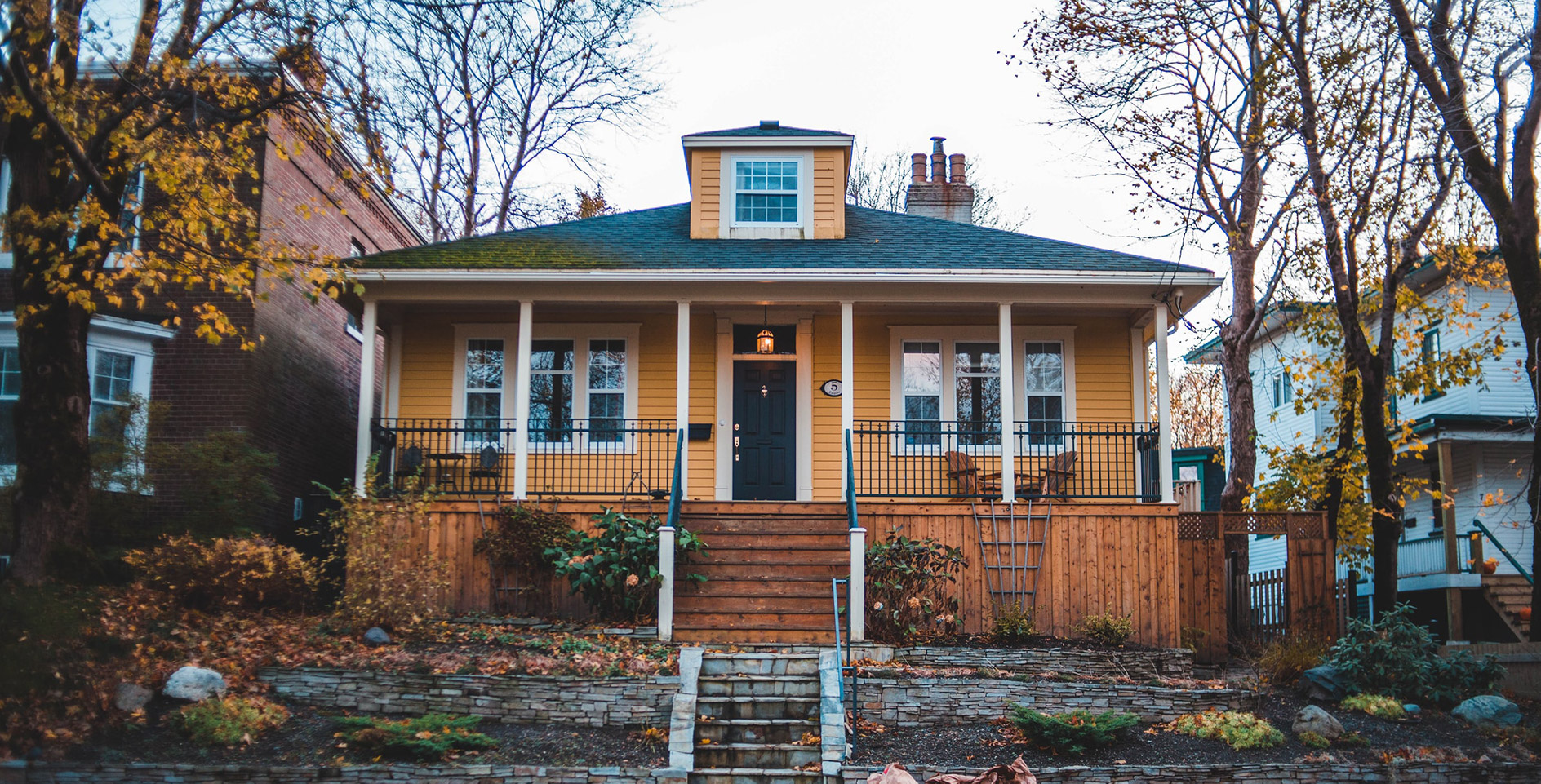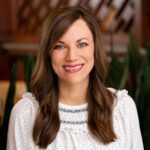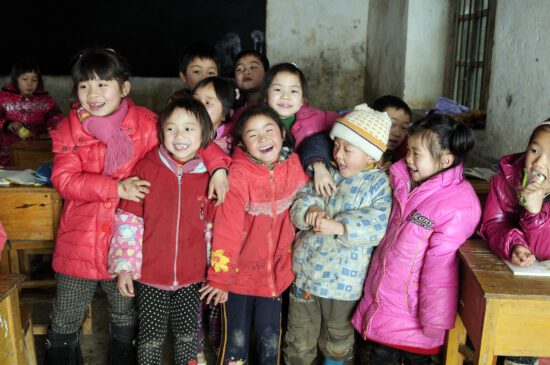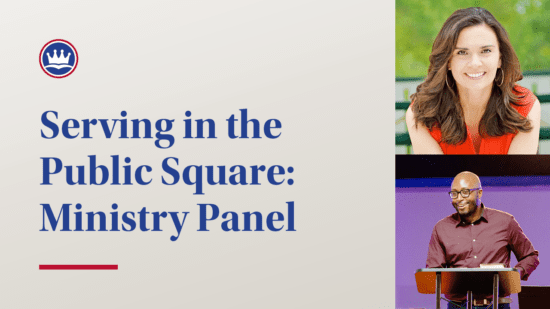Trillia Newbell is the director of community outreach at the ERLC.
Timothy Paul Jones is a professor and associate vice president at The Southern Baptist Theological Seminary.
Erica Ho is a wife, mom, and the community coordinator at One Orphan.
Lindsay Nicolet: As children witness instances of racism, how would you help them understand and process what they are seeing?
Trillia Newbell: I think it starts with them understanding the basics of our faith and the depravity of man. Teach kids that God is the Creator and has made every person. Make sure they know that he delights in his creation and that Jesus died for every tribe and tongue and nation. The gospel is for all people. Make sure they know that because of sin, people do mean and evil things and that we all need a Savior. So, when our kids see the evil in this world, they will be grieved and sorrowful, but not surprised.
Timothy Paul Jones: When your children witness such an event, the resulting conversation should be part of a dialogue that you began long before they heard that first racist comment or saw a news report that mentions race. In other words, our first conversations with our children about race should be proactive, not reactive.
One word that I try to work into every conversation with my children about race and ethnicity is beauty. The Apostle John’s description of a glorious multitude from “every nation, tribe, people, and language” is embedded in a text that is filled with beauty and worship (Rev. 7:9). That’s where I want these conversations grounded. I don’t want my children merely to accept people from other races; I want them to seek and see the divinely embedded beauty in every ethnicity and hue of melanin.
And so, my children hear some variation of this refrain repeatedly: “God made people in many colors and cultures, each one is beautiful, and the more we listen to each one, the better we understand our world.” That way, when they do see an expression of racism, I can say, “The reason we don’t use that word is because it doesn’t recognize the beauty of that person.” One of the best defenses against racism is recognizing beauty in those who are different from us instead of feeling discomfort or fear.
Erica Ho: Unless children are exposed to racism by adults in their life, they will likely be confused when they hear about race related discrimination. It is important to teach children about the history of our country and the horrific events that still fuel modern-day racism. They need to understand that sin leads people to hate their fellow man for something as simple as skin color. We must be careful to teach them to judge people by their character and not to presume upon racial stereotypes.
LN: How would you advise parents to respond to a situation where their children make a comment about someone’s race?
TN: Kids are kids and will likely say something like, “She’s brown, Mommy,” or, “Why does she have a dot on her forehead?” There’s no reason to be embarrassed. We need to make sure that we don’t make our kids feel like they’ve done something awful. Part of our own problem is that we think it’s strange to talk about culture, ethnicity, and our fear, which actually divides and alienates us further. Instead, you can simply say, “Yes, she is brown. I love how God made all of us with various colors,” or, “She wears a dot on her forehead because of the cultural traditions in her country.” Let’s take the weird out of it. Instead, we should teach and celebrate the differences.
TPJ: Children make comments about anything that seems different to them. If the shade of a stranger’s skin or the texture of someone’s hair seems out of the ordinary to a child, it’s not surprising that they will feel compelled to point that out. Don’t let your embarrassment drive your reaction to your child’s observation. Be prepared beforehand to say something like, “Yes, God made people in lots of different colors. That makes the world beautiful!”
There’s another level to this as well: If your child sees their encounter as something strange, it would be worthwhile to ask yourself how you can broaden your palette of relationships. Does your family regularly interact with people from a variety of racial and socioeconomic backgrounds? If not, where and how will you develop these relationships?
One of the best defenses against racism is recognizing beauty in those who are different from us instead of feeling discomfort or fear.
EH: I think it’s important not to overreact when a child points out another person’s race. After all, ethnicity and culture are beautiful things to celebrate. If we can model this to our children, they will learn to speak about differences in a positive way and feel free to dialogue about race and society.
LN: What are some practical ways that you've helped your children engage with people of different ethnicities and cultures?
TN: I’m at an advantage because our home is made up of two ethnicities—I am black, and my husband is white. But I believe it’s important for our kids to know about the beautiful diversity of God’s creation beyond black and white. So, for example, this summer my kids and I cooked dishes from various countries, listened to music, and learned about their history and culture. We also make sure to engage our neighbors who are from other backgrounds and countries.
TPJ: We have three children adopted from three different racial and ethnic backgrounds, so every meal in our household is a multiethnic event! And I serve as an elder at a church that is located in a diverse neighborhood. But I want my children to be exposed to more diversity than our household and church are able to provide. So, when we travel, we worship at churches where some or all of us are an ethnic minority. This has included a bilingual Hispanic church, a second-generation Korean church, and an African-American congregation.
We are also intentional about visiting museums that focus on minority experiences. The National Civil Rights Museum in Memphis, the Birmingham Civil Rights Institute, the National Center for Civil and Human Rights in Atlanta, and the Negro Leagues Baseball Museum in Kansas City can all spark important family discussions about race, privilege, and systemic structures that prevent equal opportunities for advancement. I'm also looking forward to taking my family to the National Museum of African American History and Culture in Washington, D.C.
Most importantly, nothing can take the place of developing deep relationships with persons from other races and ethnicities. Ask yourself honestly, "Does my family have friendships with people from other ethnic backgrounds that run so deep that these individuals are able to challenge prejudicial assumptions or attitudes in our lives?" If you aren’t certain, you probably don’t. Do everything you can to help your children see beauty in every race and place.
EH: We are a multicultural family, so this is a priority. There are great cultural festivals year-round that your family can attend. Spend time in a bigger city. Make friends that don't look like you. It's not difficult in today's globalized world to spend time with people that represent the nations, and our families will be enriched by this.
LN: What are some ways parents can mark off moments to talk about race?
TN: I believe wholeheartedly that we should be learning about various cultures and people throughout the year. I love that we have a month designated to black history in the U.S., and yet I also cringe that we have to have a month like this. I want kids to be exposed to as many cultures as possible, not just the ones we celebrate during designated holidays—that’s too narrow. So, please use designated holidays, but don’t limit it to just dates. Every day is a good day to teach our children about others.
TPJ: Start by choosing books from the library to read together during dates like Martin Luther King Jr. Day and Black History Month. A few of my favorites are Henry's Freedom Box by Ellen Levine, Moses by Carole Weatherford, Martin's Big Words by Doreen Rappaport, Robert Coles' The Story of Ruby Bridges and Sharon Wyeth's Something Beautiful.
LN: What are some good resources in the discussion and ministry of racial reconciliation and unity?
TN: I think that parents need to be equipped. For adults, I’d recommend starting with thefrontporch.org, resources at ERLC.com, and The Gospel & Racial Reconciliation, edited by Russell Moore and Andrew T. Walker.
TPJ: For white Christians, one essential foundation for moving toward racial reconciliation is understanding the history and experiences of persons of color. You can begin developing an understanding of the African-American experience in America, both in the past and in the present, by reading books like Why Are All the Black Kids Sitting Together in the Cafeteria? by Beverly Daniel Tatum, A Stone of Hope by David Chappell, Michael Emerson's Divided by Faith and United: Captured by God’s Vision for Diversity by Trillia Newbell.
EH: Some great books to share with your children are: The Story of Ruby Bridges, The Colors of Us, The Skin I'm In and Last Stop on Market Street.
Additional Resources
God's Very Good Idea by Trillia Newbell
This book will help children see how people from all ethnic and social backgrounds are valuable to God and how Jesus came to rescue all kinds of people. It will also excite them about being part of the church.
Mother to Son: Letters to a Black Boy on Identity and Hope by Jasmine L. Holmes
Jasmine Holmes shares a series of powerful letters to her young son. These are about her journey as an African-American Christian and what she wants her son to know as he grows and approaches the world as a black man.
Divided by Faith: Evangelical Religion and the Problem of Race in America by Michael O. Emerson and Christian Smith
Through a nationwide telephone survey of 2,000 people and an additional 200 face-to-face interviews, Michael O. Emerson and Christian Smith probed the grassroots of white evangelical America. They found that despite recent efforts by the movement's leaders to address the problem of racial discrimination, evangelicals themselves seem to be preserving America's racial chasm.
The Warmth of Other Suns: The Epic Story of America's Great Migration by Isabel Wilkerson
From 1915 to 1970, this exodus of almost six million people changed the face of America. Wilkerson compares this epic migration to the migrations of other peoples in history. She interviewed more than a thousand people, and gained access to new data and official records, to write this definitive and vividly dramatic account of how these American journeys unfolded, altering our cities, our country, and ourselves.
ColorFull: Celebrating the Colors God Gave Us by Dorena Williamson
This book teaches children to see other people's color as something to celebrate and honors the truth that we all are made in the image of God (Gen. 1:27).










